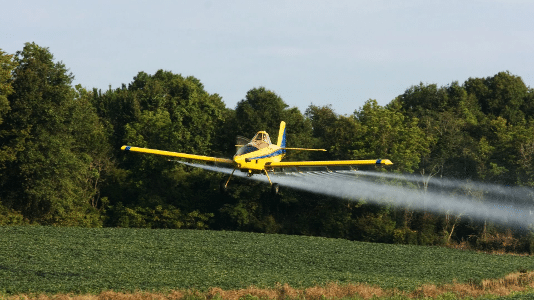
Since it was founded, the aviation industry has been carefully shaped to prioritise safety for both passengers and pilots. While flying inherently carries certain risks, rigorous training and strict safety protocols have made piloting an aircraft safer than driving a car.
That said, the unexpected can still happen. The aviation industry faces unique risks, which is why having the right aviation insurance is essential. Whether you’re involved in commercial aviation or own a small craft for private use, you’re likely to encounter at least one of these risks at some point. Understanding what they are is key to being prepared.
In this blog post, we’ll explore some of the most common risks in the aviation industry and take a closer look at how aviation insurance can help protect you against them.
Hull damage is one of the most common types of aviation risks you’ll face over your time in the skies. It refers to any damage to the structure of your aircraft, whether caused by an accident, severe weather, or mechanical failure. This damage can range from minor dents and scratches to serious structural issues that can ground your aircraft entirely.
But it’s not just crashes you need to worry about. Planes can get damaged during everyday activities, like taxiing, loading and unloading cargo, or even a bird strike. Plus, weather conditions here in New Zealand can be wild, and strong winds, hail, or debris can damage your aircraft even when it’s on the ground. Whether you’re flying a small private plane or managing a commercial aircraft fleet, the risk of hull damage is always present.
Hull insurance is designed to help you cover the cost of repairs or even replacing your aircraft if damaged. Whether your plane is flying or just sitting on the ground, hull insurance can protect you against all sorts of damage, from a minor fender bender on the tarmac to a full-on crash.
Without hull insurance, you’d be responsible for the full cost of repairs or replacement—and that can add up quickly. With the right coverage, you can focus on getting your aircraft safely back in the air without the financial strain.
It’s not all about what happens in the skies. Many of the most common aircraft industry risks occur on the ground. Ground risks include everything from taxiing mishaps and collisions with vehicles to issues while your plane is parked, being loaded, or during maintenance.
Most ground risks are due to human error, mechanical failure, or unforeseen circumstances. It could be something as simple as a faulty piece of equipment or a vehicle not seeing your plane while on the tarmac. Even during routine maintenance or while your aircraft is stored away, there’s always a risk of damage.
Ground risk insurance is exactly what it sounds like: it covers you when your aircraft is on the ground—whether parked, undergoing maintenance, or taxiing. It covers accidents like collisions with vehicles or other aircraft, damage from equipment, or even wildlife strikes.
You can often bundle ground risk insurance with other policies, like hull insurance, to make sure your bases are completely covered.
Finally, let’s discuss a slightly less tangible aircraft industry risk that almost all aircraft owners face: legal liabilities. Whether you’re flying a private aircraft or running a commercial airline, there’s always a chance that you could be held legally liable for an incident. Claims can come from all sorts of places: passengers, other aircraft, or even damage to property on the ground.
The legal side of aviation is complex, so even if accidents or injuries were caused through no direct fault of you or your aircraft, you might be unlucky enough to find yourself in the middle of a court case. Costs from these can skyrocket quickly, which is why liability can get so messy.
Aircraft liability insurance is designed to protect you against legal and financial fallout from accidents or incidents involving your aircraft. This includes covering the cost of legal defence, settlements, and any compensation that might be owed to people injured or had property damaged due to your plane.
This is a policy that many aircraft owners elect to skip, but it’s arguably one of the most important. Without liability insurance, you could be stuck paying out of your own pocket for unexpected incidents, which could be devastating. Solid liability coverage gives you peace of mind and helps ensure you won’t get caught in a bind if things go south.
Across the board, we recommend treating your aviation insurance coverage like you might treat a flight: with caution, care, and no small amount of preparation. Doing your due diligence and securing yourself against any potential risks before taking off is the best way to minimise unexpected costs and keep your aircraft running in case of serious damage.
If you’re unsure about which risks could potentially affect you, or you have a speciality aircraft with novel needs, your best bet is to get in touch with an insurance broker who has experience in the aviation industry. From there, you can tailor a plan to make sure the only thing on your mind when you hit the skies is how beautiful it is to be back in the air.
With these aircraft industry risks poised to potentially affect your work, it pays to have the right insurance backing you while you’re in the sky. Greenlight Insurance has a team of specialised insurance brokers dedicated to connecting our customers with the right aviation insurance policies. Book a consultation with us today to begin the hunt for your ideal coverage.
"*" indicates required fields
Privacy Policy | This site is protected by reCAPTCHA and the Google Privacy Policy and Terms of Service apply.
"*" indicates required fields
Privacy Policy | This site is protected by reCAPTCHA and the Google Privacy Policy and Terms of Service apply.
